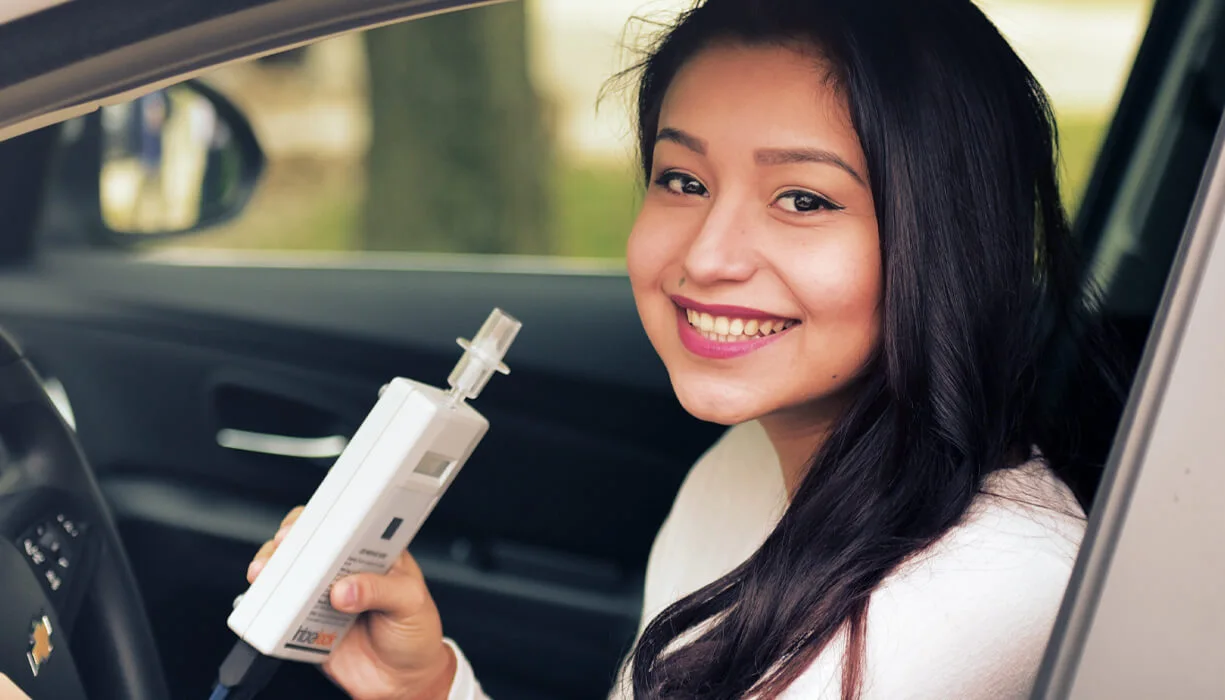Pulled Over for Suspected Drunk Driving in Oregon
Pulled Over for Suspected Drunk Driving in Oregon - A Q&A Session with Sgt. Robert Hayes
Across the country, legislators are working to help prevent drunk driving and keep our nation’s roadways safe. Because drunk driving laws are different in every state, Intoxalock wants to ensure that people know what to do in case they’re pulled over for suspected drunk driving. We interviewed Sgt. Robert Hayes with the Albany Police Department in Albany, Oregon, to get insight on what law enforcement officials do if they suspect a driver is impaired.
Intoxalock: Good morning, Sgt. Hayes. Thank you for your time. We would love to get some information from you about suspected intoxicated drivers in Oregon and law enforcement protocol in these situations. Every state has different laws. Is it legal in Oregon to pull someone over if you suspect they’re driving while impaired?
Sgt. Hayes: Good morning! Yes, police officers in Oregon are allowed to pull over a driver if there is reasonable suspicion. The driver does not need to commit a traffic violation for the officer to pull them over.
Intoxalock: What is the protocol for when you pull over someone for a routine traffic stop and suspect they’re intoxicated?
Sgt. Hayes: When we approach the driver for a traffic violation or for suspicion of a DUII (driving under the influence of intoxicants in Oregon) and make contact with the driver, we observe what we see, hear and smell. We observe if the driver has watery, blood shot eyes; if they fumble or drop their driver’s license and other documents; if they make inappropriate comments and admit to drinking; and if we notice any other unusual behavior, to name a few.
After we receive their license, registration and insurance information, we return to the patrol car and run their information to see if they have any warrants, ensure they are clear and have a valid driver’s license. If we have probable cause that the driver is impaired, we ask them to come out of the vehicle, mirandize them, ask questions about physical injuries or health conditions that would prevent them from submitting to a field sobriety test, and interview them about when, what and where they were drinking.
Intoxalock: Is there a standard set of field sobriety tests you perform and evaluate?
Sgt. Hayes: Yes, law enforcement officials across the nation are trained to perform and evaluate the Standardized Field Sobriety Test, which includes three tests.
Horizontal gaze nystagmus test:
The officer will check the driver’s eyes, asking them to keep their head still and track a stimulus with their eyes only. While performing this test, the officer looks for three clues (for a total of six for both eyes):
- Eyes have lack of pursuit. Are they jerking or bouncing while following the stimulus?
- Look for distinct and sustained nystagmus (involuntary jerking of the eyes) at maximum deviation. Do the eyes jerk for a minimum of four seconds while looking all the way to one side?
- Look for nystagmus before the eyes reach a 45-degree angle.
Presenting four out of six clues indicates they are impaired.
Walk and turn test:
The officer will ask the driver to stand on the line with the right foot in front of the left foot, heel touching toe. They will ask the driver to take nine heel to toe steps and then turn, keeping one foot on the line, and then take nine steps heel to toe steps back to where they started, all with arms at their sides, looking at their feet and counting aloud and not stopping. The officer will look for eight total clues:
- Starts walking before instructed
- Steps out of instructed position
- Misses heel to toe connections
- Steps off the line
- Uses arms to balance
- Takes the wrong number of steps
- Stops while walking
- Turns improperly
If the driver shows two of these eight clues, it indicates they are impaired.
One-leg stand test: The officer will ask the driver to stand with their feet together and arms at their side. They will then ask the driver to raise either leg about six inches off the ground. The officer will test for four clues:
- Uses arms for balance
- Puts down the foot
- Sways while balancing
- Hops
If the driver presents two out of the four clues, it indicates they are impaired.
After the officer administers these tests, they decide to arrest or not to arrest based on all the evidence: reason for stopping the vehicle, observations made when first contacting the driver and how they do on the Standardized Field Sobriety Test.
Intoxalock: When do you administer roadside testing such as a breathalyzer test?
Sgt. Hayes: We do not administer any roadside chemical testing in Oregon.
Intoxalock: Based on your experience, what you recommend drivers do during a traffic stop for suspected impaired driving? What are things to avoid?
Sgt. Hayes: Be compliant with the officer and follow directions. If you’re not intoxicated, you have nothing to hide. If you do have any physical injuries or health problems, notify the officer. Don’t drink alcohol or use drugs and then drive. Paying for an Uber is always less expensive than paying for a DUI.
We thank Sgt. Hayes for his time! If you have questions about DUI interlock requirements or need to install an ignition interlock device in Oregon, please call Intoxalock customer support at 833-623-0200.




